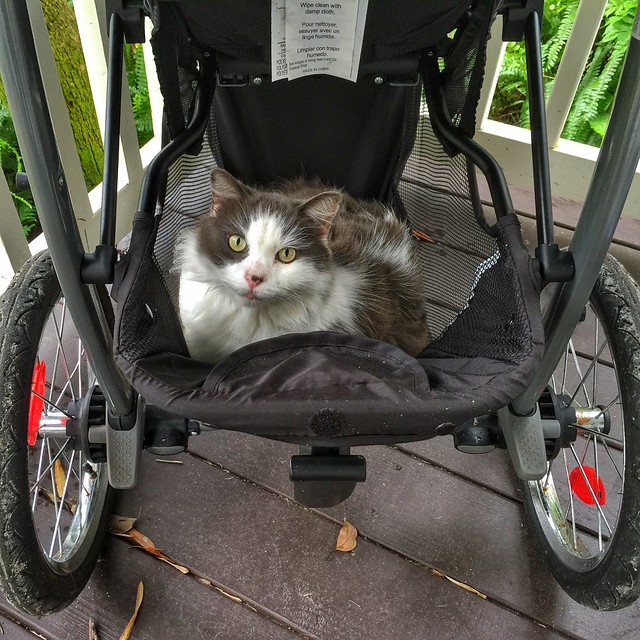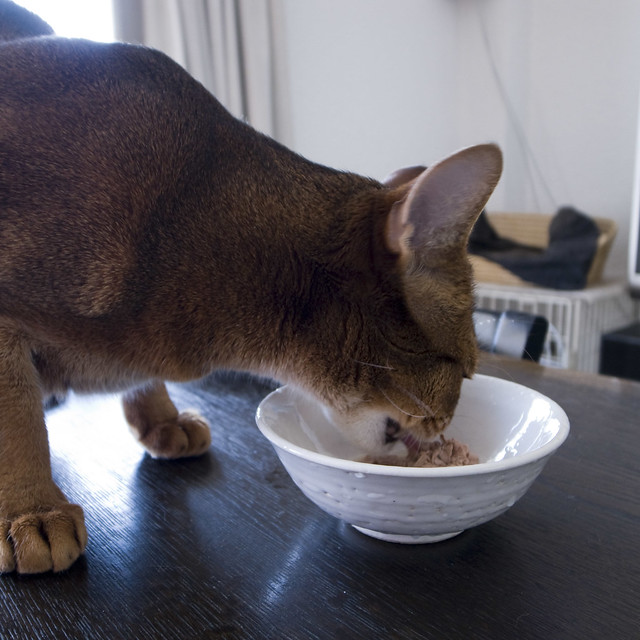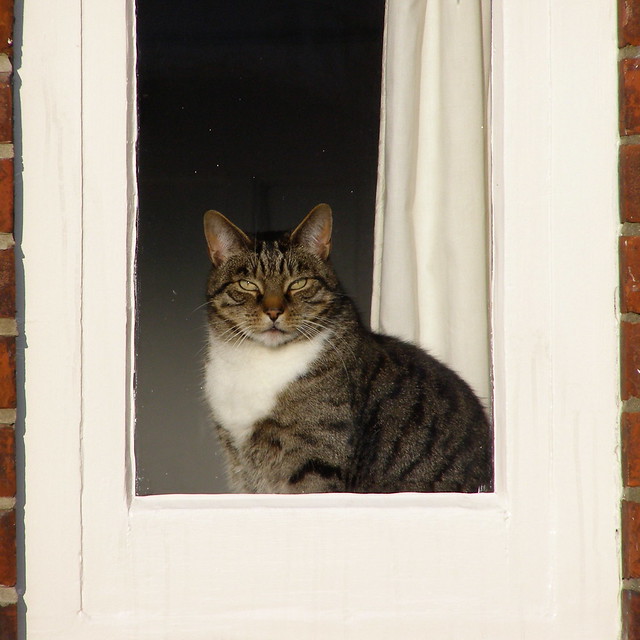Information
Caring for your cat
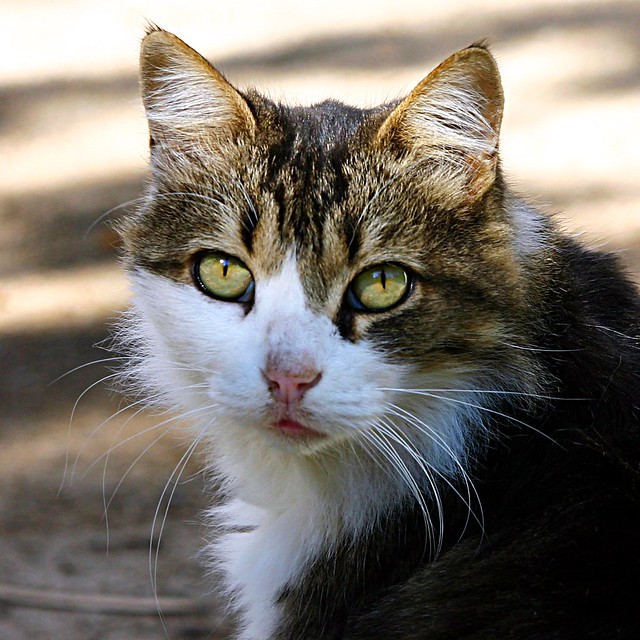
FIV in cats
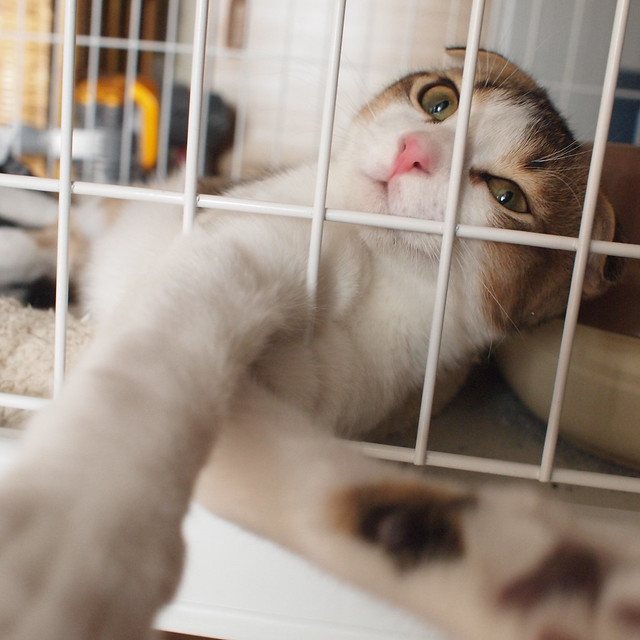
Stressed cats symptons and relief
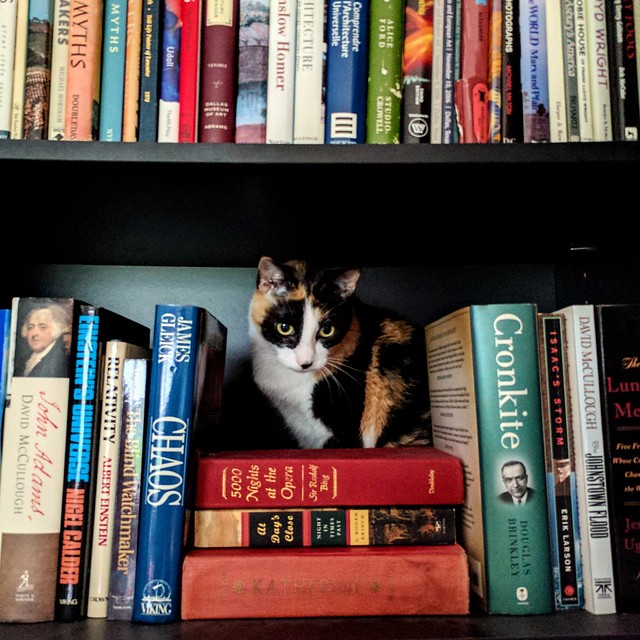
Introducing your cat to the outside
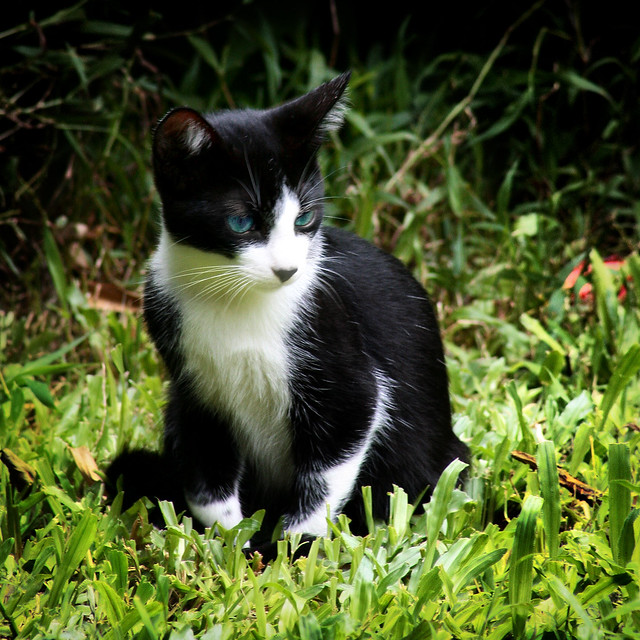
Toxic Foods and items your cat can’t eat
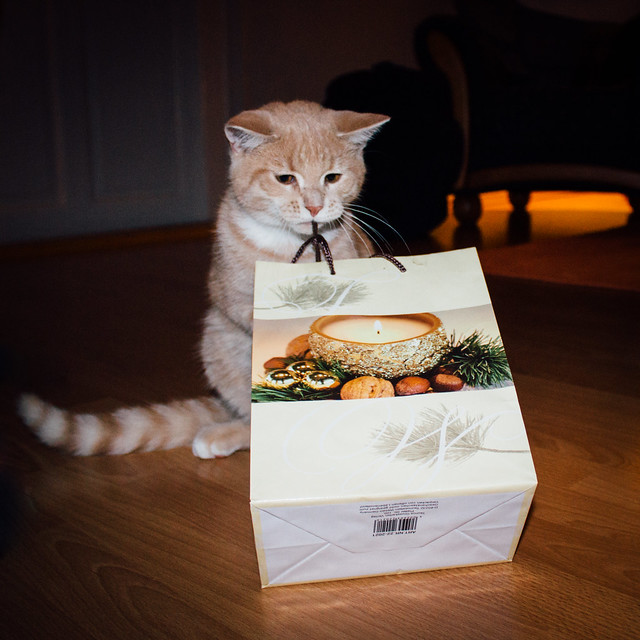
Winter cat care
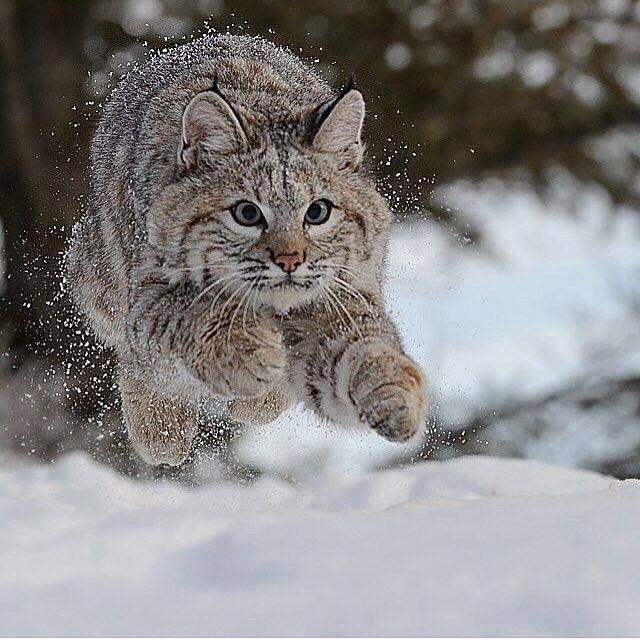
Creating a cat friendly garden
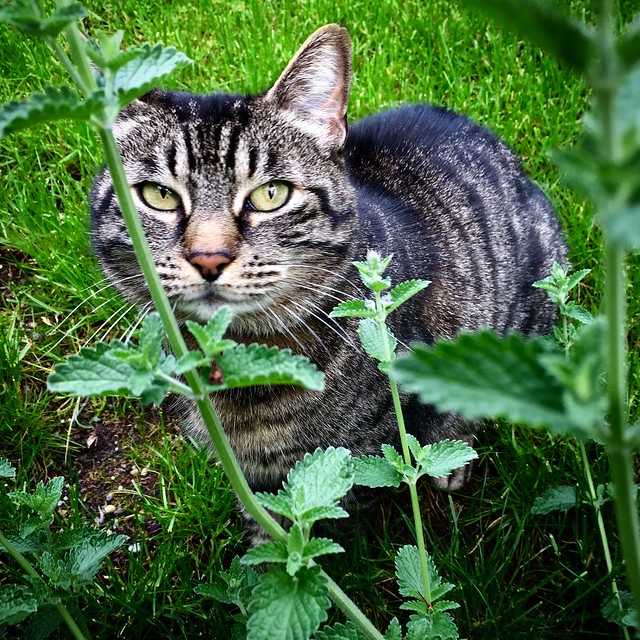
Introducing your cats to each other
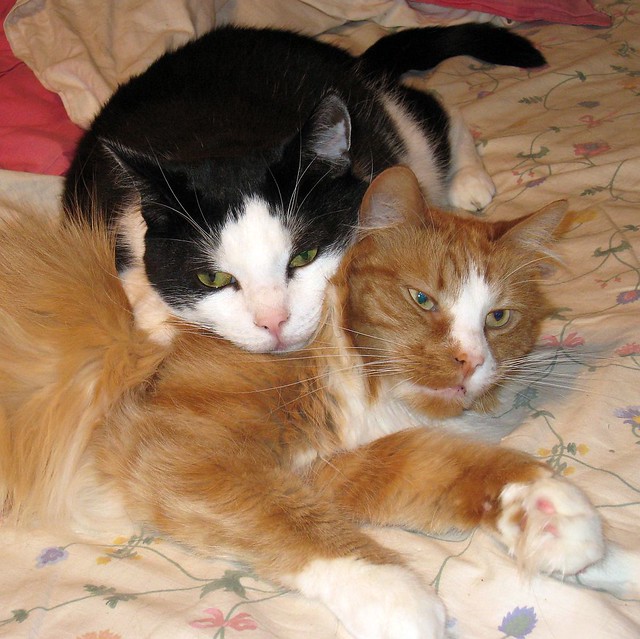
Introducing your Cats and Dogs
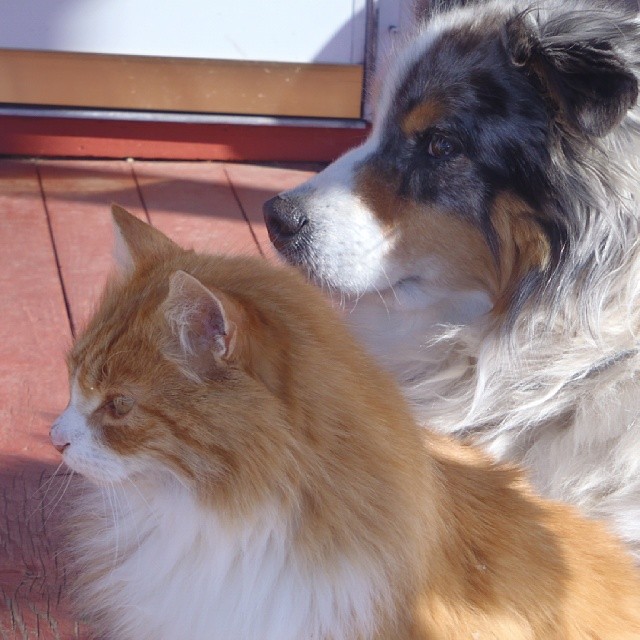
Cat Neutering
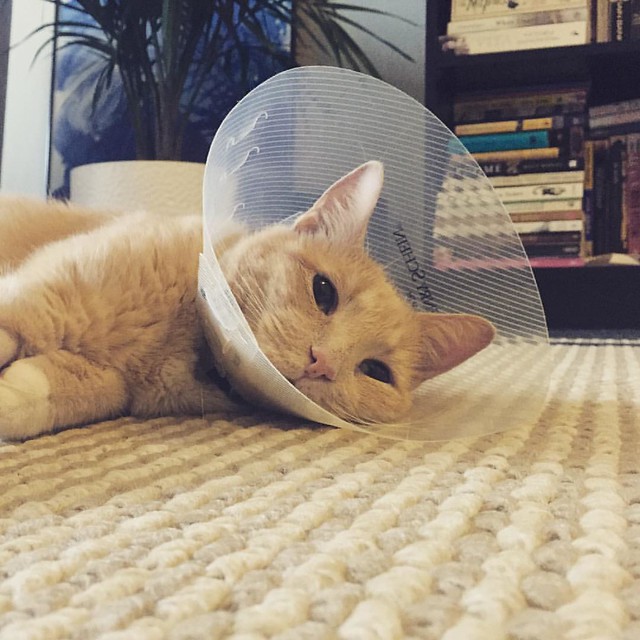
Summer cat care
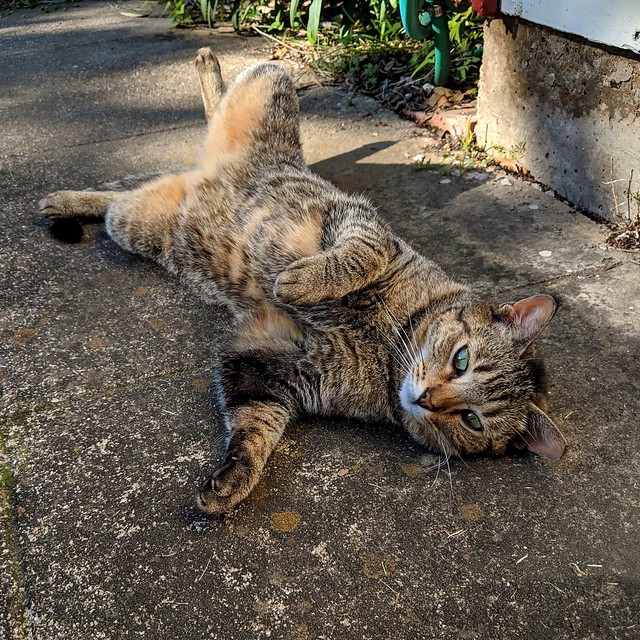
Creating cat friendly home
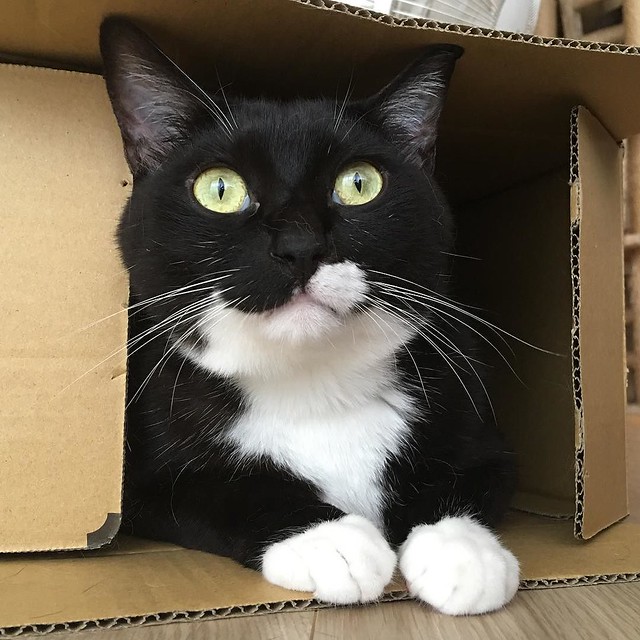
MICROCHIP YOUR CAT
Felines have a tendency to wander off every now and then so it’s important to make sure your cat is identifiable. An engraved ID tag with your contact details attached to a quick release collar which pulls apart if your cat gets their collar stuck on anything along with a microchip will help them be identified should they go missing. Here at Romney House, we microchip all cats before they go to new homes.
Make sure to keep your cat’s chip details up to date with your contact information so that you can be contacted if they are found.
When introducing your cat to the outside, we recommend a microchip cat flap which will keep your cat safe and any unexpected visitors out.
NEUTER YOUR CAT
Neutering your cat not only prevents unwanted litters but will also benefit your cat’s overall health and wellbeing. They are less likely to wander off in search of a mate or attract unwanted attention from other cats.
SIGN UP YOUR CAT WITH A VET
Don’t wait until your cat becomes ill before registering with a vet. Animals need annual vaccinations, and this time is a good opportunity for a complete health check.
KEEP YOUR CATS VACCINATIONS UP TO DATE
Caring for your cat’s health also means trying to prevent avoidable health problems developing. Cats should have yearly vaccinations and regular worming and flea treatments.
CONSIDER GETTING PET INSURANCE
Pet insurance will help with any unexpected veterinary fees and allow you to provide the best health care for your cat. There are a number of different policies and providers to choose from, but not all pet insurance is the same. Some policies limit the amount of time or money that you can claim and this is why we recommend that you don’t choose a policy based on price alone.
SOCIALISE FROM A YOUNG AGE
Providing your cat with plenty of positive experiences around daily sights, noises and situations from an early age will help prevent behavioural problems.
PROVIDE LOTS OF PLAY TIME
Most cats need access to a garden but indoor cats, who do not have the mental stimulation provided by the outside world, can become bored and stressed. This can lead to behavioural problems and destructiveness. Cat activity toys can help your cat amuse themselves when you are absent. All cats enjoy playtime so make sure you interact with your cat through games, and provide a scratching post so they can exercise their claws without shredding your sofa.
WHEN SHOULD MY CAT BE NEUTERED?
Providing there is no medical reason not to, the best time to neuter your kitten is at four months of age, before they start to become sexually mature.
For more information or to find a vet, please visit the kitten neutering database.
BENEFITS OF NEUTERING – WHY SHOULD MY CAT BE NEUTERED?
Health and welfare
- When in season, unneutered cats will have much more physical strain put on their bodies than neutered cats. This is due to the changes in their hormones, increased activity and restlessness, and for females the process of producing and looking after a litter of kittens
- Unneutered female cats are more likely to suffer from pyometria (an infection in their womb) and cancers of the ovaries, uterus and mammary glands later in life
- Unneutered females are more likely to contract serious life-threatening diseases (such as FIV), which can be passed on via the infected saliva of a male cat when he bites her neck during mating
- Unneutered males are more likely to get in to fights with other cats, also putting them at greater risk of contracting the same life-threatening diseases as females. Increased fighting may also increase their risk of serious physical injury
- Allowing cats to have kittens puts extra pressure on rehoming organisations who are constantly struggling to keep up with the amount of unwanted cats and kittens arriving every day
- If the mother is sick, she can pass on her illnesses to the kittens, making them sick too. These illnesses may include:
| Cat Flu | in young kittens this can lead to loss of eye sight or sever damage to their eyes and even death from secondary infections caused by the flu. |
| Feline immunodeficiency virus (FIV) | FIV is an incurable disease which affects the cat’s immune system and can lead to long-term negative impacts on their health. |
| Feline leukaemia virus (FeLV) | like leukaemia in humans, this virus can significantly increase the risk of cats developing anaemia, immunosuppression and also cancer. An estimated 80-90% of cats infected with FeLV die within 3-4 years of being diagnosed with the disease. |
| Feline infectious enteritis (FIE) | this virus causes severe gastroenteritis and, in infected kittens, can often lead to death. Pregnant females who are infected with FIE, the virus can spread to her unborn kittens, causing them permanent brain damage. |
Behaviour
- When in season, unneutered females are likely to go outside more, seeking mates. Unneutered males are also likely to go outside and roam a lot further from home than usual. For both sexes, this may potentially put them in harm’s way of busy roads and other hazards they would normally otherwise avoid
- The changes in the hormones of unneutered cats when in season may lead to increased restlessness, general stress and arousal, a decreased ability to relax and potential changes in the cat’s behaviour towards humans
- Unneutered cats may be more likely to spray indoors and outdoors
- If your cat is used to going outside and you try to avoid unwanted mating by denying them outdoor access while they are in season, this may lead to a significant compromise to their welfare, leading to a very stressed, frustrated and unhappy cat who is desperate to go outdoors.
Environmental
- Females with kittens to feed are more likely to actively hunt and disturb wildlife
- Unneutered females may be very vocal and will attract unneutered toms to an area which could then be very disturbing and stressful for other neighbourhood cats, as well as a nuisance to local residents.
HOW MUCH DOES IT COST?
It is usually slightly more expensive to neuter female than male cats, however help with costs is available. If you rehome a cat from a rehoming centre, they should already be neutered, and this cost will be incorporated into the adoption fee.
There are various schemes across the UK which provide financial support to owners wanting to neuter their cats such as Cats Protection, Blue Cross, The Mayhew Animal Home and RSPCA.
WHERE CAN I GET MY CAT NEUTERED?
It is very easy to find a vet that is able to perform neutering at four months of age using the kitten neutering database.
DISPELLING THE MYTHS SURROUNDING NEUTERING
Neutering young cats or kittens is dangerous
There is currently no evidence to suggest that there are any negative long-term effects on either the behaviour or development of neutering kittens as young as eight weeks. Neutering kittens from four months, or younger in some cases, is now becoming much more common among vets while advances in surgical techniques and better drugs mean that there are no longer the same concerns over earlier neutering as there used to be. If performed by a veterinary surgeon who has experience of carrying out kitten neutering, the procedure can actually be less invasive, quicker and safer to perform than when done on older cats. Cats neutered earlier may generally also have a quicker recovery rate than older cats.
It is good to let your female cat have a litter of kittens before neutering
There are no documented health benefits associated with this. Young mothers are at greater risk of complications during the delivery of their kittens.
My kitten doesn’t need to be neutered yet as she is too young to have kittens
Female cats can start to become sexually mature from as early as four months of age, so in effect, kittens can have kittens of their own. It is therefore important that your cat is neutered before they can go outside, even if they are a young kitten.
It is wrong to take away a cat’s choice to have kittens
Cats don’t actively decide to have kittens – their hormones will drive them to pursue and mate with other cats, but they are not necessarily aware of the consequences of their actions. Allowing a cat to mate puts their ability to live a life free from disease and ill health at risk. Making a kitten or young cat have kittens also takes away their ability to grow and develop unhindered and without the stress of having to look after other cats.
I don’t need to neuter my cats because they are related (i.e. brothers and sisters)
Cats will mate with their closest relatives (i.e. brother and sister, mother and son, father and daughter) so neutering all cats who are going to come in contact with each other (whether related or unrelated) is very important. Kittens born from closely-related parents may also be more likely to suffer from genetic defects which would negatively affect their health.
I have a male cat so I won’t have any problems with unwanted kittens if I don’t neuter him
Your unneutered male cat could be responsible for impregnating many unneutered female cats that you never see. These may be people’s pets or stray cats. Either way, he is contributing to an increase in the population of kittens – many of whom may not always be wanted and may struggle to find loving homes. Kittens born to stray females may also be at a greater risk of suffering from disease or infection.
I only have one female cat so she can’t have that many kittens
The length of pregnancy in cats is just nine weeks and a female cat can often come into season again just six weeks after giving birth. A female cat can easily have as many as three litters of kittens a year – that’s potentially up to eighteen kittens in any one year. Estimates suggest that a single unneutered female cat and the subsequent offspring she produces can actually be responsible for around 20,000 other cats in just five years.
I can’t neuter my female cat now because she is already in season/pregnant/feeding kittens
Even at each of these stages it may still be possible and safe to neuter your cat. You can contact your vet for further advice on this.
he sound and sight of fireworks is sudden and can scare cats. Our experts have provided top tips to help keep your cat safe, calm and relaxed during fireworks, and avoid them getting scared.
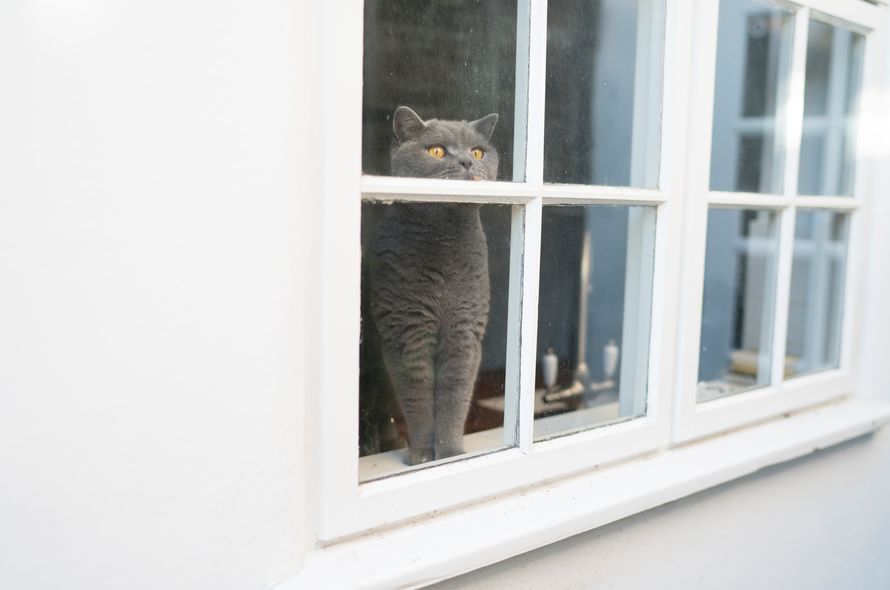
Keep your cat indoors at night time during fireworks
Even if you are not having fireworks yourself, you cannot predict if others in your neighbourhood might be. Keeping your cat indoors will avoid them being caught out when fireworks start. When keeping cats indoors be sure to provide litter trays for them.
Escape-proof your house
Close all doors, windows and block off cat flaps to stop your cat escaping outside during fireworks. Cats can squeeze into surprisingly tight spots, so block off any dangerous or unsuitable areas they may go into.
Create a safe hiding place
If your cat normally hides in a specific place, make sure they have access and encourage them to use the space with treats and toys. A box lined with blankets and with the opening slightly covered is ideal. They will feel safer the higher up they can go, so placing the box on a top shelf or cupboard will help, ensuring it’s safe.
Do not shut them in a confined area
It is very important not to shut your cat in a confined area as they could injure themselves trying to escape. Allow access to all safe areas of the house.
Cover the windows
It isn’t only the sound of fireworks that worries cats; the flashes can upset them too. It is important to cover windows and draw the curtains to block out any sudden bursts of light.
Turn on the radio
To reduce the impact of the sudden sound of fireworks, keep a radio or television on.
Act normal around your cat
Cats are very perceptive and if they notice you’re behaving unusually (like following them around or being overly affectionate) they’ll sense something is up. If they see that the fireworks have no effect on you, this may help decrease their anxiety.
Avoid picking them up
If your cat is distressed avoid trying to interact with them or picking them up as increased stress levels can provoke sudden aggression. Cats also take a long time to calm down, so leave them until morning to settle before interacting with them again.
Buy them a treat
Wherever your cat decides to settle for the night, a new toy or treats can be a great distraction from the noise. There are also products on the market that can help cats to cope with stressful events.
Make sure your cat’s microchip is up to date
Cats flee if they are scared. Make sure your cat can be identified should they run away by ensuring they are microchipped and the details contained are up to date. They should also wear an engraved tag on an easy-release collar.
IF YOUR CAT IS STILL STRESSED FROM FIREWORKS
If your cat still suffers from anxiety during fireworks it’s best to seek advice from a behaviourist or trainer as soon as possible. Do not wait until near the event as desensitising your pet to noises and flashes can take some time.
This guidance will help you make your garden or outside space cat-friendly and enriching for your feline friend.
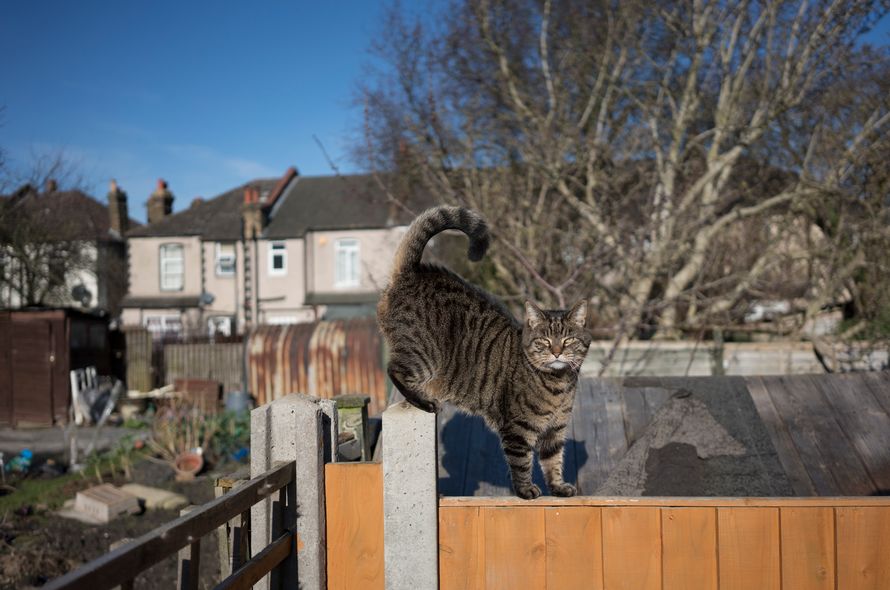
WHY IS THIS IMPORTANT?
For many cats, their outdoor space may be just as important to them as their indoor space.
Providing cats with an enriching outdoor environment which also makes them feel safe and secure is not only very beneficial to their welfare, but may also help to stop them from wandering too far from home (potentially reducing their likelihood of being exposed to various hazards and dangerous roads).
You may find that providing a ‘cat friendly’ garden or outside space for your cat has the following extra benefits:-
- Your cat may seem more relaxed and less stressed when in the house.
- Your cat may be less likely to be bored or frustrated.
- If your cat is usually very demanding of your time and attention, they may become a bit more independent.
- Cats in multi-cat households may get on better with each other or there may be less conflict between them because they have more ‘resources’ (i.e. things that the cats need) they can access individually.
- The more time your cat spends exploring your outside space, the more active and fit they may stay (especially good for cats that are generally inactive or overweight).
IS IT DIFFICULT?
Making your outside space cat-friendly can be easy to do.
The key is to try to provide all the resources in the space that your cat needs. These include:-
- Places to hide to help them feel safe.
- Places to get up high so they have a good vantage or look-out point.
- Places where they can toilet in a suitable type of ‘substrate’.
- Comfortable sunny spots where they can sleep and relax.
- Plants and other vegetation they can sniff and explore in.
- Shelter from the wind, rain and cold.
- A source of fresh drinking water (preferably rain water).
- Something good to scratch on.
PLACES TO HIDE
PLACES TO HIDE

A very bare or ‘open’ garden or outside space can make cats feel quite vulnerable or exposed – there is nowhere for them to get away and hide if they become frightened or see a challenging or unfamiliar cat enter in to their territory.
Providing good hiding places can therefore help to make your cat feel much more comfortable when outside.
These can be created easily via dense shrubs and other foliage with patchy parts that the cat can get through to access the hiding place, as well as old wooden boxes and tables and chairs (the latter can also provide good vantage points for the cat when sat on top of).
PLACES TO GET UP HIGH

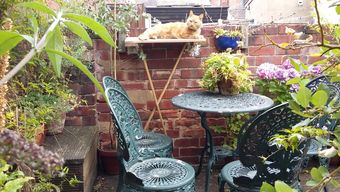
ClosePreviousNext
Cats like to be up high as it can make them feel safer – giving them a good look out point where they can check for danger or escape to if they feel threatened. High up places also provide safe places to relax when it’s sunny.
Suitable high places for cats include shelves, ledges, tables and benches.
PLACES WHERE THEY CAN TOILET (A CAT LATRINE)
TOILET SPACE

Cats are generally very clean animals and if given the opportunity, would usually prefer to use a safe suitable area outside to toilet in, far away from their other resources such as food and water.
It’s therefore important that we provide them with a nice area they can use when outside, particularly if we don’t want to provide them with a litter tray indoors. A cleared area containing woodchip, sand or loose earth provides a suitable place for your cat to toilet, although your cat may have a particular preference so it may be worth testing which ‘substrate’ they like best before creating your latrine.
Using a site that also provides a bit of privacy to the cat, for example if the latrine is surrounded by a few plants and shrubs, is ideal.
COMFORTABLE SUNNY SPOTS
COMFORTABLE SUNNY SPACE

You can easily provide nice spots for your cat to rest and sleep on by leaving an old cushion out in the garden or providing a sheltered ‘cat house’ with blankets left in.
PLANTS AND OTHER VEGETATION
Plants that attract flying insects in to the garden (such as native breeds with purple flowers) are not only good for wildlife but can provide stimulation for your cat too! Other really good plants for your cat include:-
Cat Grass – Cats may often eat grass as it is thought to help with digestion. ‘Cat grass’ is the perfect type of grass for cats to munch on.
Catmint – (pictured left) and other members of the mint family – more plants that may be attractive and stimulating to your cat.
Catnip – Whilst we’re not really sure of the exact effect catnip has on the brain of cats, many cats (around 50-70%) may find the chemicals the leaves of this plant produces to have a stimulating or hallucinogenic effect.
Honeysuckle – Thought to have a similar effect on cats to catnip (although only about 30% of cats are responsive to it).
Valerian – Depending on the amount of exposure, this plant is thought to have either positively stimulating or calming effects on cats and can be another very welcome addition to your cat-friendly garden.
SHELTER
SHELTER

Some cats will enjoy being outside, even when it’s cold or raining, although they will probably appreciate some shelter to keep them dry and warm. An old wooden box or purpose-built ‘cat house’ can provide the perfect sheltering spot for your cat.
A SOURCE OF FRESH DRINKING WATER
It’s really important to make sure your cat is drinking enough, especially if they are fed a dry-only diet.
Some cats can prefer more ‘natural’ sources of water to drink from than tap water so providing your cat with an additional option of rain water may be beneficial. If you have a water butt in your outside space you can simply fill up an old container with some of this water, or alternatively leave out a large dish to collect rain water in when it rains.
Providing multiple sources of water in various places may also help reduce conflict if the space is used by more than one cat.
SOMETHING GOOD TO SCRATCH ON
SOMETHING GOOD TO SCRATCH

Some cats will enjoy being outside, even when it’s cold or raining, although they will probably appreciate some shelter to keep them dry and warm. An old wooden box or purpose-built ‘cat house’ can provide the perfect sheltering spot for your cat.
Cats like to scratch surfaces to keep their claws in good condition, but they may also scratch to make themselves feel more secure in their environment as well as mark their presence to other cats.
They may do this both visually (i.e. by leaving scratch marks) and also via their scent (cats may deposit scent from the glands located in between the pads on their paws).
Cats may like to scratch on both vertical and horizontal surfaces so providing both options to your cat may be beneficial.
An old tree stump or large branch placed in your garden or outside space can provide a good scratching post and/or perching/resting place for your cat.
WHEN YOU HAVE MADE YOUR OUTSIDE SPACE ‘CAT FRIENDLY’ THE FOLLOWING TIPS MAY BE USEFUL
- Bonding with your cat, keeping them close by and (possibly) distracting them from hunting.
- How to deter other cats from coming in to your garden or outside space.
BONDING WITH YOUR CAT, KEEPING THEM CLOSE BY AND (POSSIBLY) DISTRACTING THEM FROM HUNTING
A really good way to spend time and bond with your cat is to simply sit with them in your outside space.
Many cats will benefit from these types of ‘low-intensity’ interaction with you (i.e. where you are not directly handling the cat) and may enjoy your near-by company whilst they relax outdoors.
For friendly cats that do not enjoy lots of regular long stroking sessions or being picked up, this type of interaction can be particularly beneficial.
You can also take toys in to the garden and play with your cat. This is another good way to interact with and positively stimulate your cat without the need for direct handling.
Spending time with your cat in the outside space may also encourage them to stay closer to home and not to roam as far when they are outside – helping to keep them safe.
Playing with your cat in your outside space may potentially distract them from hunting live-prey, stimulating their predatory instincts whilst directing them away from wildlife (although there is no guarantee that this will work!).
HOW TO DETER OTHER CATS FROM COMING IN TO YOUR GARDEN OR OUTSIDE SPACE
An unfortunate side effect of making your outside space irresistible to your cat is that cats from other neighbouring houses may be just as keen to spend time in there too. This may be especially the case in areas with high populations of cats and where there are limited amounts of outdoor green space available (such as in large areas of terraced housing that have no or very small outside areas).
For many cats, this can be quite stressful because an intruder cat may be perceived as a direct threat to your cat’s territory and personal safety. There are no easy solutions to this problem, but the points below are likely to help:-
- Provide your cat with lots of safe places, as outlined above, making sure you provide several of each type of ‘resource’ and place them in different locations around the outside space.
- You can ‘midden’ for your cat around the outside space (this basically involves leaving small piles of your cat’s poo in prominent places such as on walls or steps). The presence of the poo signals to other cats that the garden is already occupied and can act as a deterrent to other cats).
- High fencing around the periphery of your outside space can help to set a physical boundary that your cat can easily patrol and mark (for example they may have a daily routine where they walk along the top of the fence, checking for other cats). They may also scratch or spray along the sides of the fence or ‘midden’ on the top or in another prominent location.
- Patrol your outside space at peak times when other cats are known to come in – if you see an intruder cat you can try clapping your hands or letting out a loud sharp sound such as ‘out!’ to try to deter the cat from coming in.
- Install a microchip cat flap to ensure that intruder cats can never actually get in to your house as this can be very stressful for cats.
This guidance will help you make your home cat-friendly and enriching for your cat.

WHY IS THIS IMPORTANT?
As we know, a cat is very different to a dog, and has a range of specific needs that reflect this. Unlike domestic dogs, cats are much more closely related to their recent wild, asocial ancestors. What this means is that whilst many cats are very confident, friendly and seemingly unfazed by our often busy and unpredictable lifestyles, others may sometimes struggle to live in an environment so different to that of their wild relatives.
However, with careful matching of a cat with the right owner and home (our job!), and following the advice provided below (your job!), your cat has the best chance of having a happy and enriched life with you.
WHAT DO WE MEAN BY ENRICHING?
We want every cat to be able to thrive in their new home. Therefore, whilst it’s very important that each cat is kept in good physical health, we want to ensure each cat also feels safe and secure, and in addition has plenty of opportunity to experience pleasure and positive emotions.
All this can be achieved by providing your cat with a stable and predictable environment, as well as various sources of enrichment or ‘entertainment’ (which we will describe below).
WHERE SHOULD WE BEGIN?
A good way to understand the fundamental needs of cats and their order of importance is to think of them within a pyramid – the needs at the bottom will be of primary importance to your cat, but once these have been sufficiently met, the next level of the pyramid will become the priority, and so on, as your cat progresses up the pyramid.
Your cat’s most primary need is to be free from pain and disease, to have access to food and water, and to be physically comfortable. The next need is for her to feel safe, to be able to retreat and hide from challenging or unpleasant situations, and to have safe access to all her important resources (i.e. the things she needs). After these needs are sufficiently taken care of, the next priority is for her to have a predictable, relatively calm, and stable environment. If she feels all these needs are already adequately provided for, she will then prioritise exploration and various forms of environmental and social interaction (depending on her temperament – she will value social interaction to a greater or lesser degree).
BASIC HIERARCHY OF NEEDS FOR CATS
PYRAMID OF NEEDS

The needs at the top of the pyramid (such as environmental stimulation) are unlikely to be a priority for your cat if she doesn’t first feel safe or have predictable access to her resources, so efforts should be made to ensure these needs (i.e. needs 1-3) are met before trying to encourage her to play or interact socially with people (i.e. need 4), because this could be too overwhelming for her at this point, particularly if she has only recently been introduced to your household.
Depending on the temperament of your cat, her current physical and emotional state, as well as the environment she is in, she may need some extra support for some of these needs to be met. For example, a very timid cat may need a much quieter and more predictable environment for need 3 of the pyramid to be met than a bold, confident cat, who in turn might need much more environmental stimulation for their need 4 to be satisfied.
HOW DO I MEET THESE NEEDS FOR MY CAT?
NEEDS 1-2: PHYSICAL HEALTH, PERSONAL SAFETY AND ACCESS TO RESOURCES
How to take care of your cat’s basic health, provide her with all her basic resources, and help her to feel safe and stress free is covered in our advice on reducing your cat’s stress.
NEED 3: PREDICTABILITY AND STABILITY
The following advice will help you to be able to provide a stable, calm and predictable environment for your cat. What’s most important is that your cat feels she has choice and control over various aspects of her life, and the more that she can predict when both good and not so good things are going to happen (see examples below), the happier, more settled and less anxious and frustrated she is likely to feel.
Predictability and stability:
Keeping to a general routine with regards to the following will allow your cat to feel more in control of her surroundings. For example:-
- Feeding her at the same times each day.
- Keeping her main resources (e.g. food, water, litter trays and beds, hiding places) in the same quiet and undisturbed locations. If any resources have to be moved (i.e. due to decorating, or the arrival of a baby), do this gradually, one at a time, rather than changing everything at once.
- Being consistent in the way she is handled and interacted with.
- Being consistent in terms of what rooms of the house she can and can’t have access to. This will be easier for her to get used to than if she is only sometimes allowed in certain areas (such as the bedroom), which might cause her frustration when she is suddenly shut out.
- If she is particularly sensitive to noise and disturbance, try keeping cleaning to predictable times – this way she can anticipate when the disturbance is going to happen and take herself off somewhere quieter if necessary.
In addition, the following will also help:
- Making sure she always has access to a hiding place or quiet area of the house, particularly when it is noisier or busier (for example when visitors come to the house, when the vacuum cleaner is on, when loud music is being played, furniture is being moved about, or the house is being decorated).
- Cats deposit special pheromones via skin glands located around their face and other areas of their body (such as their tail and between their paws), and they will rub these glands on furniture and other objects around the house (you may have seen your cat doing this, or you might have noticed the slightly brown, grubby marks she leaves behind afterwards – especially on white surfaces). These pheromones are thought to make the environment feel more familiar and reassuring to your cat, and therefore you should avoid cleaning these marks away, at least too often.
- If your cat has specific areas in the house where she sleeps, avoid washing all her blankets/bed cushions at once. This will help to maintain the presence of her smell within the house and again make it seem more familiar to her.
- If you have a cat flap, make sure no cats from the neighbourhood can enter the house – the best way to do this is to install a microchip operated cat flap.
- Scratching is a natural behaviour that cats perform to keep their claws in good condition, but your cat may also want to scratch to make the environment smell (by using the scent glands located in between the pads on her paws to deposit scent) and look (via the visual marks the scratches leave) more secure and familiar. Providing her with specific objects to scratch on is therefore a good idea.
Choice and control:
It’s also a very good idea to provide your cat with as much choice as possible, for example:
- Providing her with multiples of the following, in different places around the house; beds, hiding spaces (e.g. cardboard boxes, cat igloos, areas under beds or other furniture) and places to get up high (e.g. cat trees, shelves and window ledges), litter trays and sources of food and water. Because cats have exceptional hearing and sense of smell, there may be noises and smells in parts of the house that we can’t detect, but that are off putting to her (for example the chemicals in cleaning products or high frequency noises emitted by household equipment such as washing machines and televisions etc.). Therefore, providing her with more than one place to sleep, toilet, drink, eat, rest etc. will help her to avoid anything she might find unpleasant in her environment, whilst still allowing her to access the things she needs.
- Allowing her to decide whether she wants to interact with people or not, and if so how long for.
- Allowing her to go and be in a quiet room of the house undisturbed if she wants to.
- Allowing her to come and go within the house and to have unrestricted access to a garden or outside space.
NEED 4 – ENVIRONMENTAL AND SOCIAL STIMULATION:
The following advice will help you to be able to provide your cat with positive environmental and social stimulation. However, each cat is an individual and may have their own specific preferences for the types of things they do or don’t enjoy. Therefore, an amount of trial and error, combined with frequent observations of your cat are important to identify her preferences.
Outdoor enrichment:
Access to a safe, stimulating outdoor environment
Most cats are highly motivated to spend a large proportion of their day exploring and seeking out interesting sights, smells, sounds, textures and tastes within their surroundings. Your cat may get a lot of pleasure from performing these activities, which will help to keep her both mentally stimulated and physically fit and active. One of the easiest ways to achieve this is to provide her with a positively stimulating outdoor area. For further information about how to provide this please see our advice on how to make your garden or outside space cat-friendly and enriching for your cat.
Indoor enrichment:
Puzzle feeders
These make feeding times more of a challenge, which is a great source of mental stimulation for your cat. They will also help to keep your cat physically active, stop her from eating too fast, and encourage her to perform parts of her natural predatory sequence (for example seeking out the food, using her paws and mouth to manipulate the feeder).
Puzzle feeders are generally made of plastic for ease of cleaning, and come in a range of different shapes and sizes. Some are ball shaped and roll around as the cat paws at them, whilst others are stationary and require the cat to push, scoop or lick at them in order to get the food out.
Puzzle feeders are designed to be used with either your cat’s treats, or their normal kibble or wet food. Some cats may prefer stationary feeders whilst other cats may prefer ones that move when pushed or touched. Some cats may like a combination of both types. If your cat is very food motivated and can use puzzle feeders easily, she may benefit from being fed all of her food portions (i.e. both wet and dry) in the feeders. Wet food is usually easier to use with stationary feeders rather than moveable ones (see third photo above). To keep the puzzle feeders interesting for your cat, we suggest using a couple and changing them each time you feed her.
A cattery staff member should be able to tell you which types of puzzle feeders your cat enjoyed using at Battersea.
Play
Play is another great source of mental stimulation, as well providing physical exercise for your cat. Play may also encourage her to direct her predatory behaviours towards ‘safe’ objects rather than your hands or feet, or live prey.
Some cats may prefer to play with people, other cats with toys by themselves, and some may enjoy a combination of both. When playing with your cat, long fishing rod type toys with feathers, bits of ribbon, or prey-sized furry objects on the end are some of the best kinds. The way the object attached to the end of the string can be moved around can be quite stimulating for your cat, but the good thing is that it is also far enough away from your hands so they don’t get in the way of your cat’s teeth or claws whilst she is playing.
Toys that mimic the size, shape and texture of prey (e.g. furry mouse sized toys or those made of feathers) can be particularly good to encourage interest from your cat, especially if they are impregnated with catnip. She may also enjoy playing with these prey-like toys on her own (i.e. self play). However, catnip can be quite arousing for some cats, so we advise that you don’t try to handle or touch her whilst she is under the influence!
CAT AT PLAY

To keep toys novel and interesting, it’s good to store some of them away and only bring them out during play sessions (especially the fishing rod types). Other ‘self play’ toys can be left out, but these should be changed regularly to keep them exciting for your cat. Avoid leaving string/fishing rod toys out as your cat may get tangled up in them.
A complex and interesting environment, encouraging her to explore and exercise
COMPLEX AND INTERESTING ENVIRONMENT

Cats enjoy both being up high and having a good ‘vantage point’, as well as hiding and being concealed. Provide your cat with an environment that contains lots of elevated places she can climb up or jump on, as well as quiet places she can hide (e.g. a mixture of cat trees, cat tunnels and shelving, combined with cat ‘igloos’ and cardboard boxes – see photo above).
Cats also enjoy exploring and seeking out new sights, smells, sounds, textures and tastes. You can help to stimulate your cat’s senses in this way by providing the following (for outdoor examples see our advice on how to make your garden or outside space cat-friendly and enriching for your cat).
Examples of indoor things to stimulate your cat’s senses

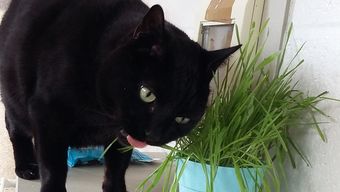
ClosePreviousNext
- A large cardboard box with leaves, food or natural feathers scattered inside.
- A large cat tunnel again with leaves, food, or feathers scattered in it.
- A range of suitable indoor plants, especially catnip and cat grass. These can be easily grown in small pots and placed around the house for your cat to sniff and chew on (see photo above).
- Please see guidance on poisonous plants to avoid.
- A range of different materials and textures to scratch on e.g. sisal posts (see photo above), corrugated cardboard scratching blocks, logs or tree stumps – these can be sprinkled with herbs such as catnip or valerian to make them extra appealing.
- As well as using puzzle feeders, you could also try ‘scatter feeding’ with your cat by placing small amounts of her dry kibble in different places around the house for her to search for (but make sure she first feels settled and comfortable in your home before doing this).
Positive, appropriate interaction with people
This is another potentially great source of positive stimulation for your cat.
Most cats don’t have a problem tucking in to their meals, but some take a bit of coaxing to keep a healthy diet. Follow these cat feeding tips when it comes to meal time and your cat will be dining daily.

FEED YOUR CAT TINNED AND DRIED CAT FOOD
Both tinned and dried food will give your cat the nourishment they need, but dried food also helps to clean their teeth.
HOW MUCH TO FEED A CAT
Feed your cat twice a day. Dried food can be left down all day so your cat can eat when they please. Kittens and older cats need smaller but more frequent meals.
BE CONSISTENT
Your cat will let you know which brand and flavours they like best, and often won’t touch anything else! Try not to change your cat’s diet frequently as this can cause diarrhoea.
BE SANITARY
Ensure food and water bowls are placed well away from the litter tray. Food bowls, including those which are only used for dried food, should be cleaned daily. Cats are fastidious creatures and some won’t eat from used bowls.
PROVIDE EASILY ACCESSIBLE WATER
Clean, fresh water should always be accessible – never give your cat milkas this could upset their stomach. Water should be contained in a ceramic or metal bowl. It is advisable to have a second water bowl, placed away from the food bowls, under a desk or bed.
STIMULATE YOUR CAT
You could use meal times to provide your cat with stimulation by hiding food portions or putting food in an activity ball.
KNOW WHAT THEY CAN’T EAT
Not all everyday foods and items are safe if your cat comes into contact with them. Learn which items are particularly dangerous to your cat.
FIV (FELINE IMMUNODEFICIENCY VIRUS) IN CATS
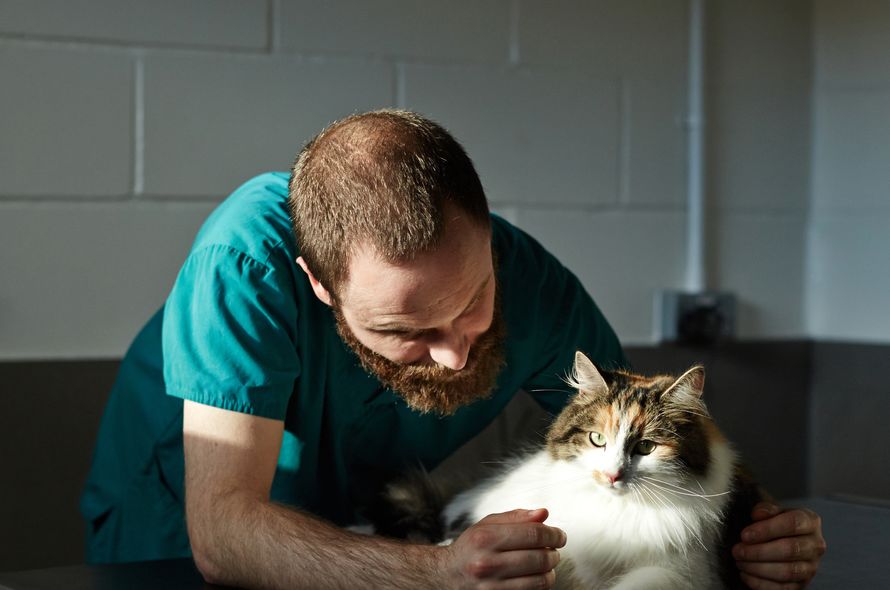
WHAT IS FIV?
Feline Immunodeficiency Virus (FIV) is a cat-specific virus that is thought to affect approximately 2-5% of the cat population in the UK.
It is a slow acting virus and many infected cats enjoy a normal lifespan with no apparent health concerns as a result of the virus. FIV is species specific and cannot be passed to humans. If you’re willing to make a few adjustments to your home (both to protect them from illness and other cats from the disease), these cats make wonderful and rewarding companions.
GUIDANCE FOR OWNERS OF FIV+ CATS
HOW CAN I ADJUST MY HOME TO BE BEST SUITED FOR AN FIV+ CAT?
Due to the FIV infection, it’s considered important not to expose her to other cats, both for their protection (i.e. to prevent her passing on the virus), and her own (she may have a weakened immune system and so could be more susceptible to other diseases transmitted by cats in the neighbourhood). However, being confined indoors would deny her the many benefits that access to the outdoors provides, and therefore potentially compromising her welfare. Instead, the best solution is to not only provide her with opportunities for positive stimulation indoors, but also with an enclosed, enriching, outdoor space.
WHY DOES AN FIV+ CAT NEED A GARDEN/OUTDOOR AREA?
Behaviourally, the domestic cat is very much like her wild cat relatives – what this means is that (depending on her age and temperament) she may be highly motivated to spend a large proportion of her day exploring and seeking out interesting sights, smells, sounds, textures and tastes within her environment. She may get a lot of pleasure from these activities, which will help to keep her both mentally stimulated and physically fit and active.
She may also enjoy having time away from the busy and sometimes unpredictable environment inside of the home, instead preferring to quietly relax in a sunny spot outdoors, perhaps getting a good view of her territory via a high up ledge, or even curling up and sleeping under a bush, or in a specially provided ‘cat den’.
Giving her access to a suitably enriched and stimulating cat proof garden is the best way to allow her to perform these behaviours; all of which are very important for her physical and emotional wellbeing. Ideally, she should have constant access to this space, via a cat flap for example.
The FIV virus will not influence a cat’s temperament or drive to perform these behaviours, and so her needs for positive sensory stimulation and access to quiet areas away from the home are the same as for any non FIV+ cat. Whilst technically it could be possible to provide her with the above opportunities within an indoor only environment, in reality, this is much harder to do, and in most cases not practical due to the space, cost, time and effort required.
WHAT IS A CAT PROOF GARDEN?
Cats can easily climb a standard 6ft fence, therefore a properly enclosed garden requires some sort of barrier or structure that makes it physically impossible for cats to climb up, over, and out of the garden. This barrier is typically an overhang of netting secured to the top of an existing framework, such as a fence located around the perimeter of the garden (see illustration below).

Alternatives to netting include long poles (again attached along the top of a fence) that roll when stepped on, thus making it very difficult for the cat to jump on to and over.
Both these types of barriers should also prevent other cats from being able to enter the garden.
HOW BIG SHOULD THE CAT PROOF GARDEN BE? WHAT DOES IT NEED TO HAVE INSIDE IT?
The cat proof garden should be large enough to provide her with plenty of things to explore, space to exercise, and the opportunity to go through parts of her predatory sequence (i.e. stalking, chasing and pouncing).
Unless they are very large, and filled with lots of enriching items (such as plants and dense shrubs, tables and chairs and raised ledges), cat runs or outdoor cages are generally not considered sufficient to provide her with a suitable outdoor space.
A suitable cat-friendly garden should include the following features (please see our guidance on how to make your garden or outside space cat-friendly and enriching for your cat for more details on what/how to provide these):-
- Places to hide to help her feel safe
- Places to get up high so she has a good vantage or look-out point
- Places where she can toilet in a suitable type of ‘substrate’
- Comfortable sunny spots where she can sleep and relax
- Plants and other vegetation she can sniff and explore in
- Shelter from the wind, rain and cold
- A source of fresh drinking water (preferably rain water)
- Something good to scratch on.
Due to the enclosed nature of the garden, your cat won’t be able to roam freely and explore as they may have been used to (particularly if they was previously a stray or came from a rural area). It’s therefore important to ensure your garden is sufficiently stimulating to prevent them from becoming bored or frustrated. The more enrichment (e.g. vegetation, hiding places) and structural complexity (e.g. bits of furniture such as ‘cat houses’, chairs, tables, ledges and ladders, all at different heights) you can add to the garden, the more appealing and positively stimulating this will be for your cat.
A bare open garden with nothing to explore and nowhere to hide is likely to seem both daunting and unappealing to your cat.
PROVIDING POSITIVE STIMULATION INDOORS
A cat friendly, positively stimulating environment indoors is also very important, particularly if your cat has limited space to roam outside due to the enclosed, cat proofed garden. A cat friendly indoor environment should aim to:-
- Contain all the key resources your cat needs (and in suitable locations)
- Be a relatively calm and predictable place for your cat to be
- Contain a quiet place where she can go and spend time undisturbed
- Contain lots of things to keep her entertained and provide her with pleasurable experiences.
For information and advice on how to achieve this, please see our advice on how to make your home cat-friendly and enriching for your cat.
The process of introducing your new cat to your dog should not be rushed. Read our advice on how to ensure the introduction goes as smoothly as possible.
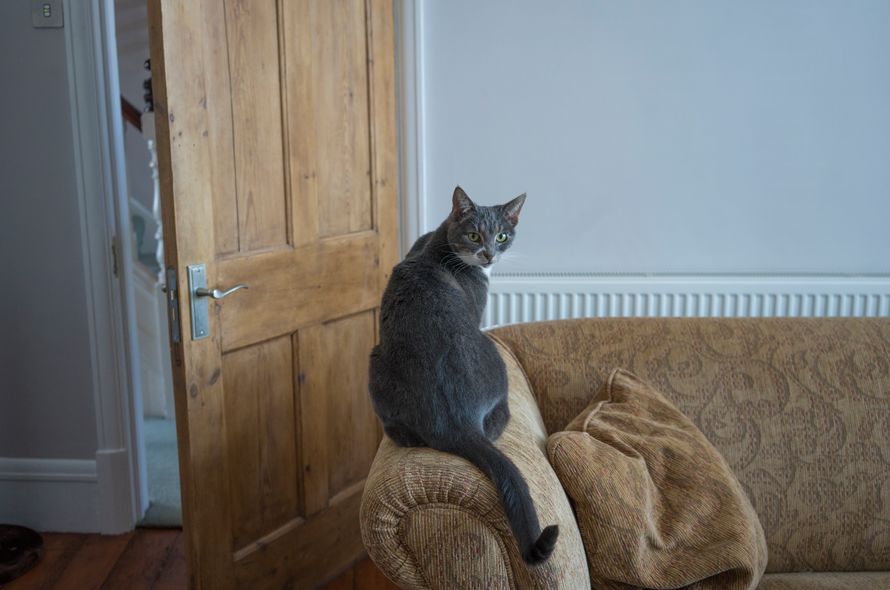
When you arrive home with your new cat, ensure that your dog is not waiting at the door as your cat needs time to recover from the journey and get used to their new surroundings.
INTRODUCE CATS AND DOGS IN THREE SIMPLE STEPS
STEP 1: GIVE YOUR CAT TIME TO SETTLE
Allow at least one to two days for your cat to settle in before introducing them to your dog.
This may take longer depending on how confident your cat is.
During this period your cat and dog should be kept separate. Keep the cat in one room where your dog is not allowed. Make sure your cat has food, water and a litter tray in the room.
Whilst still keeping your cat and dog separate, you should make them both aware that there is another animal in the house. Stroke your cat and then let your dog smell your hand. Also swap blankets or bedding that they sleep on.
STEP 2: RELAXED FIRST MEETING
The first meeting should be done when both cat and dog are in a relaxed state.
Keep your dog’s lead on and keep it as slack as possible. This will ensure the cat’s safety while allowing the dog some freedom to investigate their new friend. Let your dog sniff and learn about their new housemate. It is quite acceptable for the cat to give them a warning ‘swipe’ on the nose but be ready to intervene in case the dog retaliates. You should remain calm throughout the introduction.
If things are going well, let them continue to interact. Drop the lead but be ready to take control again. From time to time call your dog to you and reward with a treat whenever they respond. After a few minutes, end the session and have some one-to-one time with your dog while another person makes a fuss of your cat in a separate room.
STEP 3: REPEAT
This process should be repeated two or three times a day for the first few days.
With time, your dog and cat will get used to each other and you will gradually be able to let them interact freely.
If you feel that your dog and cat are not getting on, separate them immediately and get in touch with us for further advice.
Your cat will want to go out and explore the garden and beyond. Follow these tips to help ensure your cat can explore – and come home safely.

HOW LONG BEFORE LETTING YOUR CAT OUTSIDE
Adult cats -How long you leave it before letting your cat outside depends on the cat’s personality but generally it’s best to allow two to six weeks after you first take them home.
Kittens – The timescale is different for kittens. To prevent your kitten getting frightened, losing their way home or picking up an infection, keep them indoors until they are at least six months old and have had all their vaccinations.
PREPARING FOR THE OUTSIDE
Before your cat sets out to explore, make sure they have been microchipped and fit them with an identification disc carrying your contact details. Even if your cat has been microchipped, this disc makes it even easier to identify and return them if they go missing. Also remember to keep your cat’s microchip details fully up to date.
A safety collar is also a good idea in case your cat gets into a difficult situation. Luminous or reflective collars make it easy for your cat to be spotted by car drivers.
THE FIRST VISIT OUTSIDE
- Never force your cat outside, they must make the transition at their own pace.
- Your cat will be nervous, so make sure you supervise their first encounters with the great outdoors. Let them out for a short period, then encourage them back in.
- The first visit outside should take place ten minutes before feeding time. Gradually increase the time to twenty minutes before the meal on the next visit and so on.
- Teach your cat to recognise a sound or signal that tells them that dinner is ready. Rattle the food box, tap the side of the can with a fork or call the cat’s name every time you feed them.
- As the initial encounters with the outside world have to be supervised, make sure that your back door is shut and that windows aren’t left open in the summer. If your resident cat has a cat flap, ensure your new cat can’t follow them out.
- If you have a dog, keep him inside when you first let your cat out. He may be tempted to chase when he sees them in an outside space.
ENCOURAGING YOUR CAT TO USE A CAT FLAP
For cats, the cat flap is the equivalent of having their own key to the door. If you are at work all day a cat flap gives your cat access to your house and the outside world. Although it gives them the freedom to come and go as they please, they might need some encouragement to actually use it.
These tips will help your cat get started:
- Choose your cat flap carefully. Some cats don’t like the solid type as they can’t see through it and get anxious about what might be on the other side. A see-through Perspex cat flap lets your cat see what’s in store – both good and bad!
- Tape open the cat flap and use a tasty treat to coax your cat through it. They will soon get the idea that they can go through it, so you can gradually leave the flap down and encourage the cat to push on it.
- If your cat develops behavioural problems after the flap is fitted, it’s usually because another cat is using it to get in to your house, or your cat is being bullied outside by another cat.
- Other cats coming into your home may cause stress for your cat and lead to fights and messing in the house. Sure Petcare’s microchip cat flaps ensure you don’t play host to some uninvited guests. The cat flap operates by reading your cat’s registered microchip as it approaches and remains locked for any unwelcome animals.
It’s best not to force the two together; it could make the cat nervous of being around the children and the children fearful of the cat. Instead, try this gradual introduction programme over a week or two.
FIVE STEP CATS AND KIDS INTRODUCTION PROGRAMME
STEP 1: INITIALLY IGNORE THE CAT
Start the introductions once your cat has settled into their new home. Ask the children to sit down quietly and to stay calm throughout the introduction. When the cat is let into the room, ask the children to ignore her.
STEP 2: BLINK VERY SLOWLY
To let the cat know that they aren’t a threat, ask the children to blink very slowly at the cat.
STEP 3: BUILD UP TIME TOGETHER
Gradually build up the time your cat and children spend together. They can hand feed the cat treats and play games as long as they don’t touch the cat or get too excited or noisy. If they do, stop the introduction session.
STEP 4: STOKE GENTLY
Get the children to stroke the cat gently twice, then give a treat. Gradually increase the time they spend stroking the cat. If the cat runs away, stop the introduction and try again later.
STEP 5: WAIT FOR THE CAT TO APPROACH FIRST
As a general rule, teach children to only touch a cat if the cat approaches them first. Children should never pursue or pester a cat for attention as they will quickly learn to avoid them.
The most important part of introducing your new cat to your resident cat(s) is not to rush the process. Read our advice on how to ensure the introduction goes as smoothly as possible.

Introducing the cats to each other too quickly could cause a lasting bad first impression that may never be overcome. Many people assume that if their current cat has lived with another cat in the past, then everything will be fine when a new cat is introduced. This is not always the case, particularly if you have recently lost one of a very close pair of cats within the last six months.
INTRODUCING CATS TO EACH OTHER IN THREE SIMPLE STEPS
STEP 1: GIVE YOUR NEW CAT TIME TO SETTLE
Remember that your new cat needs time to settle so provide her with an area where she feels safe and can start to adjust to her new surroundings.
Keep your new cat in a separate room to begin with and ensure that there is no way that she can escape.
During this time give your new cat anything that your resident cat has slept or laid on and vice versa. This will make sure that each cat is getting used to the other’s scent. To help your existing cat feel more secure, take a damp rag and rub it over their scent glands (these are on the cheekbones and the pads). Then rub the rag over areas where they feel relaxed, such as windowsills, near radiators and certain chairs. This should be done at least twice a day and will reassure your cat that they can still smell their own scent in the areas that are important to them.
Your resident cat may lurk outside the room where the new cat is staying and sniff under the door. This building up of curiosity may mean it is actually a relief when the cats first get to see each other.
STEP 2: LET THEM CATCH A GLIMPSE
After a day or so, when your new cat has settled, try wedging the door open an inch so they can glimpse each other. If that seems to go well, then you can move on to the next step.
Once settled (this could take a few days), allow your new cat time out of the room so that she can familiarise herself with her new surroundings. Ensure that your old cat cannot meet them during this time.
STEP 3: RELAXED FIRST MEETING
Ideally, you should make the initial introductions with your new cat in a large pen, but if this is not possible, please have a friend or family member on hand to help. Your friend should open the door to your new cat’s room whilst you are with your existing cat in another room or some distance away. Watch the cats to see how they interact and if all is calm, reward them with a tasty treat.
As time goes on, each cat will begin to adjust to the other. Any forcing or rushing on your part will only make the situation more stressful and the settling in process will be prolonged. Some cats become best friends and others will merely learn to tolerate each other.
If you feel that your cats are not getting on, then get in touch with us for further advice.
Make sure your cat keeps cool this summer with our useful tips on how to keep them safe throughout the summer months.

1. USE SUN CREAM
Cats with lighter-coloured fur are more likely to be at risk of getting sunburnt. Fur protects the cat’s skin to some extent, but if your cat allows, apply animal friendly sun cream to put on the areas most exposed, especially the end of the nose and tips of the ears.
The sun cream used for your pet should be Titanium Dioxide-based and avoid any that contain Zinc Oxide. Always speak to your vet first if you are unsure which sun cream to use.
2. PROVIDE PLENTY OF SHADE
Make sure there are plenty of shaded areas in the garden so that your cat has options to keep sheltered whilst still having the freedom to roam around in the great outdoors.
3. KEEP YOUR CAT HYDRATED
Make sure your cat has access to plenty of water throughout the day and evening. Refilling often will also keep the water fresh and cool for your cat.
4. REMEMBER TO KEEP INSIDE COOL AS WELL
Indoor cats can feel the heat too. Investing in a fan will do wonders – for both your cat and you! Netting frames that fit over windows and doors are also a good way to keep the place well-ventilated without the worry of your cat escaping.
5. DON’T OVEREXCITE YOUR CAT
On really hot days, an active cat will quickly become exhausted and dehydrated. Instead, encourage a more relaxed approach to the day, or for an inquisitive cat, put down a couple of ice cubes for your cat to play with.
6. CHECK YOUR SHED
If you have a shed or conservatory open, check no cat is secretly hiding in there before you lock up for the day.
7. KNOW THE SIGNS OF HEATSTROKE IN CATS
Cats are affected by the sun in the same way humans are. They can get heat stroke in the same way and develop skin cancer from sun burns – even on cloudy days. Keep an eye on your cat’s behaviour and know the signs of heatstroke:
- Agitation
- Stretching out and breathing rapidly
- Extreme distress
- Skin hot to the touch
- Glazed eyes
- Vomiting and drooling
If your cat is displaying odd behaviour or you notice any skin changes during hot days, contact your vet immediately and seek advice.
Cats can be very sensitive creatures and may often become anxious or frustrated by things going on around them, or by the way people interact with them. Here is our advice on how to help your stressed cat.
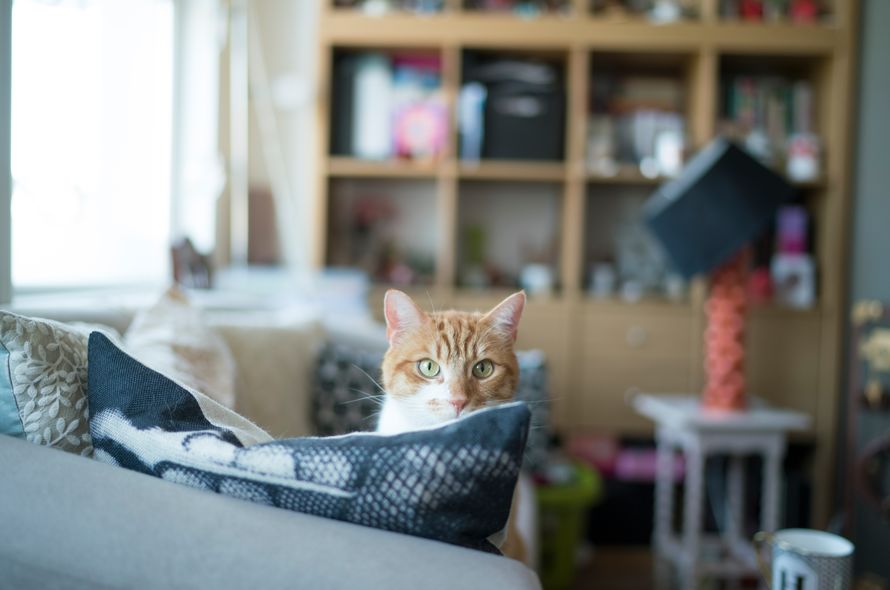
Evolving from a largely independent and solitary species (called the African or Near Eastern wildcat), the domestic cat can be very good at hiding signs that they are stressed or in pain, because in the wild this would make them an easier target for predators.
It is important that you manage and reduce stress in your cat as much as you can because if your cat is stressed, they can become both emotionally and physically unwell and may develop physical illnesses as well as display problem behaviour. Often owners may only notice something is ‘not quite right’ with their cats when they have already been stressed for some time. Cats may lose their appetite or be sick occasionally or behave in a way that owners have never seen before, such as spraying urine against the wall indoors or behaving aggressively.
The sooner you realise that your cat could be experiencing stress, the sooner you can resolve the problem. This means you need to keep a close eye on your cat’s physical health as well as their behaviour so that anything ‘odd’ or ‘out of character’ that could be a sign of stress is quickly identified.
HOW CAN I TELL IF MY CAT IS STRESSED?
There are some common signs of a stressed cat, both physical and behavioural.
PHYSICAL SYMPTOMS
- Diarrhoea
- Vomiting
- Large bald patches or sores on the coat caused by over grooming
- Runny nose and eyes (e.g. cat ‘flu’)
- Symptoms get worse in cats with chronic health conditions or recovery from illness is slow (stress can affect a cat’s immune system and ability to fight disease)
- Eating non-food items such as plastic or wool (this is called ‘pica’)
- Poor appetite or eating less than normal
- Looking lethargic and sleeping more than usual
- Excessive eating and/or drinking
- Sudden weight loss or weight gain
- A poor coat condition
- Not going to the toilet as often as usual (faeces and/or urine)
- Frequent squatting, painful urination with blood in it (e.g. cystitis).
BEHAVIOURAL SYMPTOMS
- Any noticeable change in your cat’s usual patterns of behaviour and routines
- Toileting outside of the litter tray (e.g. behind the sofa, under the bed, on the bed etc.)
- Spraying urine on furniture and other items around the home
- Scratching excessively on the furniture
- Aggressive behaviour directed towards you, your family or visitors
- Aggressive behaviour directed towards other pets in the home
- Excessive meowing
- An increased dependency on you or your family, constantly wanting to interact
- Withdrawal from you and the family, no longer interested in interacting with you
- Unresponsiveness to things going on around her (she doesn’t jump or get startled by loud noises or quick movements)
- Constant vigilance and jumps at every sudden sound or movement
- Frequent hiding when in the home (e.g. under a sofa or bed, on top of a wardrobe)
- Reluctance to play – having previously been very playful
- Reluctance to come into the home
- Reluctance to go outside
- Excessive grooming
- Repeated pacing when in the home, often accompanied by loud meowing.
OTHER SIGNS OF A STRESSED CAT
You may notice your cat sits differently, her facial expression changes or she does odd little things.
- Often crouching and looking tense indoors (see image 1)
- Ears rotate backwards frequently (see image 2) or flatten downwards (see image 3)
- Wide open eyes with very dilated pupils which makes her eyes look black (see image 4)
- Staring at the floor with a fixed, glazed expression
- Rapid frequent grooming that usually lasts around five seconds, starting and stopping quite suddenly
- Frequent head shaking
- Rippling, twitching skin on her back
- Exaggerated swallowing and quick flicks of her tongue onto her nose
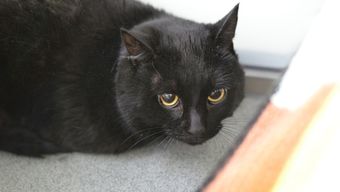
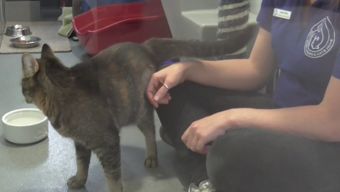
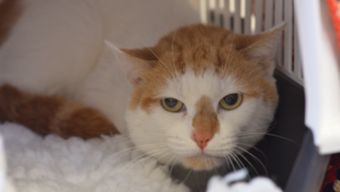

ClosePreviousNextTop tip
One of the best ways to protect your cat against possible stress is to try to anticipate the sorts of things that might cause them stress in the first place (such as moving to a new home or the addition of a new cat to the household). Once you have identified possible sources of stress, you can then manage the situation or environment in a way that helps reduce the chances of your cat suffering.
WHAT CAN CAUSE MY CAT STRESS AND HOW CAN I REDUCE THIS?
Every cat is an individual. Whilst some cats may generally appear very laid-back and seemingly ‘unflappable’, other cats can be much more sensitive and find many things around them stressful.
The following are common examples of situations that may be stressful for cats.
CAN CATS DRINK ALCOHOL?
Just like humans, cats can get intoxicated when they drink alcohol but it is believed that as little as a tablespoon of alcohol can be seriously problematic for your cat and cause liver and/or brain damage.
CAN CATS EAT ONIONS?
The onion family, whether eaten raw, or cooked, in sufficient quantity may give your feline an unpleasant digestive upset and are best avoided. Keep these foods out of reach of your cat.
CAN CATS DRINK MILK?
Most cats are lactose intolerant and giving them a saucer of milk may give them a nasty stomach upset. It is better to leave down a bowl of fresh water instead as branded cat milk has no nutritional value.
CATS AND ANTIFREEZE (ETHYLENE GLYCOL)
Cats find antifreeze appealing because of its sweet taste. Ethylene Glycol is the chemical compound found in most types of antifreeze which is very toxic to cats. Even just a few drops of this in a puddle or spill under your car is enough to cause serious, if not fatal, kidney damage if your cat were to eat it or walk through it and then lick their paws. Symptoms include vomiting, drooling, loss of appetite, excessive urination or none at all.
CATS AND MEDICINES
Paracetamol and ibuprofen tablets are highly poisonous to cats and should never be given to them as pain relief. Paracetamol in particular is very toxic to cats and can cause irreversible damage to their red blood vessels and liver. Signs to look out for include panting, difficulty breathing and a brown tongue and gums.
CAN CATS EAT CHOCOLATE?
As with dogs, chocolate is poisonous for cats thanks to its key substance theobromine. Even a small amount can cause heart problems, kidney failure and/or seizures, so it’s always best to keep those chocolate snacks hidden away.
CATS AND LILIES
Cats like to eat grass when they are outside, but sometimes they bring this habit indoors and chew on houseplants and many of these can be toxic. Lilies in particular have a sweet scent which attracts curious cats, however its orange pollen is highly toxic and causes fatal kidney failure in cats. Brushing against the flower can cause pollen particles to cling to their fur which are ingested during grooming. Avoid having these types of house plants in your house.
WHAT SHOULD I DO IF MY CAT HAS COME INTO CONTACT WITH SOMETHING POISIONOUS?
If consumed, even small amounts of these items can be fatal so always act immediately and take your cat to the vets.
Our expert advice on how to protect your cats against the chill this winter.

1. AVOID USING ANTIFREEZE
Ethylene glycol, otherwise known as antifreeze, is a chemical commonly used during the winter to prevent freezing. It is frequently used in car radiators, screen washes and deicers, as well as in garden water features to stop them freezing over. Cats seem to be attracted to the taste of this chemical which can prove deadly if they ingest it.
2. BANG THE HOOD OF YOUR CAR
Cats have a habit of crawling under car bonnets to soak up the warmth from the engine so always tap the hood of your car before starting the engine to disturb any sleeping stowaways.
3. CHECK THEIR PAWS
Check your cat’s paws and dry them thoroughly after they’ve been outside. This is especially important with long haired cats as they are prone to snow compacting between their toes and turning into ice balls which can prove very painful.
4. PROVIDE A LITTER TRAY
Even if your cat usually prefers the great outdoors, give them a place to do their business indoors without having to go outside in freezing temperatures.
5. PROVIDE LOTS OF TOYS
Your cat will probably be spending more time indoors, so make sure they are entertained with lots of interesting toys and games to play with.
6. KEEP THEM WARM AND DRY
Dry off your cat if they get wet outside and make sure you provide somewhere warm and snuggly for them to curl up, especially if they are of the older feline variety.
7. HAVE A NIGHT IN
Try to keep your cat indoors in the colder evenings so they are safe from the traffic in conditions with reduced visibility.
8. MAKE SURE YOUR MICROCHIP IS UP TO DATE
Your cat’s microchip should always be up to date, but this is especially important over the winter months where they are more likely to wander off to find the nearest warm place.
Cats can be very sensitive to any changes in their owner’s routines, for example, if they start getting up earlier in the mornings or spending more time away from home. Unpredictability can be quite stressful for cats, so if your routines change, try to keep your interactions with your cat as consistent and predictable as possible, for example, making sure you still feed her at the same time and play and interact with her in the same way.
- If you start being away from the home for longer than usual, it’s a good idea to make sure you have provided your cat with an enriched and exciting indoor and outdoor environment to help keep her stimulated and prevent boredom and frustration.
- On the other hand, if you are in the home more than normal, it’s also good to ensure that there is a quiet undisturbed room your cat can retreat to when she needs some time alone to relax.
Top tip
Not only do cats feel safe when they are surrounded by familiar things, they like their home and routines to be predictable and consistent as this helps them to feel more in control of their environment.
There are several key resources (things your cat needs) that she will depend on to keep her happy and healthy. If your cat is not provided with them, this can be a great source of stress.Top tip
As well as the amount of resources you provide for your cat, the quality, type and location of the resources are also incredibly important. For example, if the litter tray you provide for your cat is too small, not cleaned out regularly enough or is placed next to a noisy area in the home or next to her food and water bowls, these factors can all cause stress.
For a cat, sharing their important resources (such as food, litter trays, beds, human attention etc.) with another cat, especially if they haven’t grown up together, can be really stressful.
Cats can often see other members of their species as ‘competitors’ rather than ‘allies’. Signs of tension between cats can be quite subtle and so owners can easily not pick up on them.
Owners need to provide, and carefully place, all their key resources to help reduce tension and conflict between cats and encourage them to live together in harmony.
Very friendly and bold cats may see visitors as something pleasurable and exciting whilst more nervous or sensitive cats may become worried by the presence of unfamiliar people in the home.
Ensuring your cat always has the means to escape and hide or get up high will help to make her feel safer in these situations. If your cat is sensitive or shy then it may be helpful to follow these guidelines:-
- It is a good idea if you let your guests know if your cat is likely to find new people a bit overwhelming and suggest that they let the cat choose whether to approach them or not. Your cat may prefer to have a good look first before she chooses to interact. Sometimes it is better for your guests to ignore her and let her make the first move!
- If your cat is motivated by food treats, ask your guests to gently throw some of your cat’s favourite treats on the ground a short distance away from her, encouraging your cat to approach.
- If your cat does approach, advise your guests to initially crouch down and offer their hand (palm facing down) for her to sniff. If your cat sniffs or rubs against their hand, you can encourage your guests to gently stroke the area around your cat’s cheeks and chin. If your cat is very playful, you could also encourage your guests to use a fishing rod or feathered wand toy if you think she would be more comfortable playing than being stroked.
- Whilst your guests visit you can also use the pheromone plug-in diffuser (as mentioned above) to help her feel more relaxed.
Depending on how much noise and disturbance this may bring to the home, and how sensitive your cat is, it may be better for your cat to stay with a friend or in a good cattery during this period.
If the disturbance in the home is likely to be minimal or can be restricted to certain rooms, parts of the home or times of the day, your cat may be able to remain in the home, but will benefit from the following:-
- If the building works require you to move any of your cat’s resources (e.g. her food and water) from their usual positions, ensure they are placed in new locations that are quiet and undisturbed and that you move them gradually over a period of time so that your cat has time to get used to these new positions in advance of the sudden noise and disturbance the building work will bring.
- Make sure your cat always has somewhere to escape to or hide away, preferably several different options. Ledges and shelves at different heights and cardboard boxes are ideal.
- If possible, make sure there is still a quiet undisturbed room in the home (complete with options of places for your cat to hide) where your cat can go during noisy busy periods.
- You can also use a Feliway® plug-in diffuser containing a synthetic feline facial pheromone that continuously releases calming pheromones into the environment. This may help to relax your cat and reduce her anxiety.
- If your cat has access to a garden, this offers her another opportunity to escape if she feels overwhelmed by the noise and commotion going on in the home. Making your garden as ‘cat friendly’ as possible can also help your cat to relax whilst she is outside.
Top tip
Cats feel safe when they are surrounded by familiar things. If you’re changing your sofa then plan ahead and cover the old sofa with a fabric throw before you make the switch and then you can use the same throw (which will smell familiar to your cat) over the new sofa when it arrives.
Whilst many cats like to be fussed and stroked for long periods of time, no two cats are the same, and some cats may find too much stroking, or being stroked in certain places, uncomfortable and stressful.
Some cats may be very quick to tell you what they like (by miaowing for more or pawing at you when you stop stroking them) and what they dislike (by swiping at you or biting you), but others may be much subtler in communicating how they feel. Many cats may simply tolerate being stroked or handled even though they are not enjoying it, and often it is these cats that are becoming the most stressed from the handling they experience.
Pay close attention to your cat’s behaviour and body language when you are stroking her to help you to better understand where and for how long your cat likes being touched.
It is really important that your cat always has the option to remove herself from the interaction if she chooses. This means you should never physically restrain your cat when you are stroking her, or pet her when she is trapped within a hiding space. This will help her to feel more relaxed and in control when she interacts with you.Top tip
As cats have evolved as an independent solitary species, being able to make their own decisions is important to cats so giving them choice and control over what they do, how, when, and with who is key to reducing stress for your cat.
Not only can intruder cats attempting to come into your home be stressful for your cat, but their presence outside and especially in your garden or outside space can also be a source of stress.
The best thing you can do is to make your garden as safe and cat friendly for your cat as possible so that she feels more confident when outside and also ensuring there are plenty of resources (such as rain water for drinking, places to sleep, hide, get up high, as well as places to toilet) that are well distributed to reduce potential conflict between cats.
Whether you have just rehomed your cat and she is being introduced to your home for the first time, or you are moving home with your existing cat, this can be a very stressful time for them.
Cats like to be in a familiar environment as this helps them feel safe and secure. If they suddenly find themselves in a place they have never been before, this can cause them to feel anxious or worried.
Ensuring your cat has all the resources she needs and then introducing her to a new environment gradually and carefully are key to reducing stress.
If you are moving home and you know your cat is likely to become stressed by all the disturbance and commotion this may bring, it may be better for her to stay with a friend or in a good cattery during this period. Your cat can then be introduced gradually to the new home once the move is complete.
The arrival and presence of other pets in the home can be very stressful for a cat – whether this is from the perspective of a new cat to the home being introduced to an existing cat already resident in the home or from the perspective of the resident cat trying to cope with the arrival of an unfamiliar cat in their home.
For the new cat, this can be a particularly stressful time as she is being introduced to an unfamiliar home, new people and other pets all at the same time which is likely to make even the boldest and most confident cat feel worried and unsettled.
For the resident cat, as well as the stress associated with the sudden presence of an unfamiliar cat in to their home (often referred to as a cat’s ‘core territory’), there are likely to be other general changes associated with the addition of a new cat that might also cause your cat stress (such as a change in your behaviour, changes in routines, changes to access around the home etc.). It’s therefore important to try to maintain a resident cat’s normal routines as much as possible, and if you need to move any of her resources to accommodate the arrival of a new cat, that you do this gradually and before the new cat arrives.
Unlike dogs, as cats have evolved from a mainly solitary species, they may see the presence of another cat in the home as a possible ‘threat’. It’s therefore really important that you introduce the cats carefully and gradually and that you manage their environment, resources and relationship over the long term so they can live together harmoniously in the home.
Just like with a new cat, when it comes to introducing your new cat to a resident dog, the key here is again to introduce them carefully and slowly so that the cat has a better chance of feeling safe and in control in the presence of the dog.
The addition of a new baby into the home is a very exciting time but, from your cat’s perspective, it can also cause a lot of disruption in the form of new sounds and smells, changes in your routine, moving of furniture and the arrival of new objects (such as toys, prams and cots).
For some confident and inquisitive cats, this can be very interesting and intriguing, but for others it can cause them stress and anxiety as they may not feel as ‘in control’ of their environment anymore, with so much change happening at once.
- Your daily routine will probably change quite drastically when the baby arrives. If you can anticipate what is likely to change (e.g. how long for, when you play and interact with your cat, who will be feeding your cat, when she will get fed, when she will or won’t have access to certain parts of the home or outdoors etc.) and slowly introduce these changes in advance of baby arriving – this can greatly help your cat to adapt.
- You can gradually introduce your cat to the new objects associated with the baby, for example toys and prams, so that by the time the baby arrives these things are already familiar to her. Each time you introduce a new item into the home, place it in a ‘neutral’ area (that means not directly near your cat’s important resources such as food bowls or litter trays), leave some of your cat’s favourite treats on or around the new item, and then let your cat explore it in her own time.
- You can also play your cat recordings (which are commercially available) of the various sounds babies make (giggling, crying, gurgling, squealing) very quietly at first, gently increasing the volume over time so that your cat can slowly and gradually get used to these different noises before the baby arrives. Each time you play the recordings, you can also distract/reward your cat with a few treats.
- As your child starts crawling and then walking, it’s a great idea to provide your cat with lots of places where she can rest and perch that are out of the reach of children, for example, a big ‘cat tree’ or a cat bed placed on a shelf or on top of a cupboard. Using baby gates so that your cat can access an area that is quiet and ‘child free’ is also a great way to help her to cope sharing a home with a curious and active young child. As your child starts to show an interest and wants to interact with your cat, you can also teach them how to do this appropriately, such as how and where to touch the cat. By doing this you will help to prevent your child from being bitten or scratched, but also ensure that your cat is comfortable with being stroked.
Top tip
As cats have evolved as independent solitary hunters responsible for their own survival, feeling safe is essential to cats so having lots of options and choices of places to hide (e.g. igloo type beds, cardboard boxes etc.) or get up high (e.g. on tops of wardrobes, cupboards, shelves etc.) to help them feel secure is one of the key things that you can do to help ensure your cat is happy.
This can be a frequent problem for many cats and may not always happen when you are around to witness it. For example, many intruder cats may come in to the home via the cat flap (or even an open window) late at night or in the early hours of the morning when you are probably in bed.
Unfamiliar cats coming into the home (whether you encourage them to come in or not) can be very stressful for your cat, because she may feel as though she has to be constantly on the look-out, ready to defend her core territory at any minute. Especially if intruder cats are not vaccinated, they may also spread disease to your cat when they come into your home.
The best way to manage this problem is to ensure you feed your cat far away from the cat flap (so that intruder cats are not enticed by the smell of nearby food) and to invest in a microchip-operated cat flap, so that only cats with the correct corresponding microchip (this is the identification microchip that is implanted under the skin on your cat’s neck) can access the cat flap.
Especially when there are unneutered female cats in the neighbourhood, entire stray male cats may be attracted to a particular area and can be very vocal, confrontational and aggressive towards other cats. Just having these cats around could be very stressful for your cat.
Entire male cats are also more likely to carry various diseases, such as FIV (Feline Immunodeficiency Virus), which could be transmitted to your cat through fighting. The best way to deal with this problem is to talk to your local rehoming charity for advice as they may be able to provide help (or direct you to other organisations that can help) by using a humane trap to capture the cat and either neuter him and return him to the same area or relocate him to a more suitable environment.
Adopt
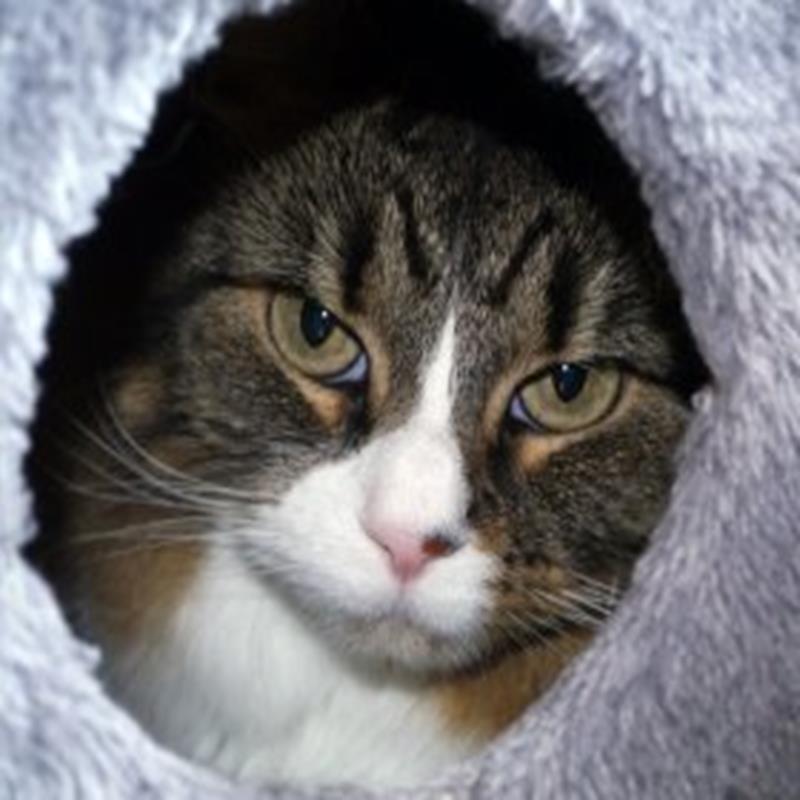
If you would like to adopt a cat or kitten you can learn more here
Sponsor
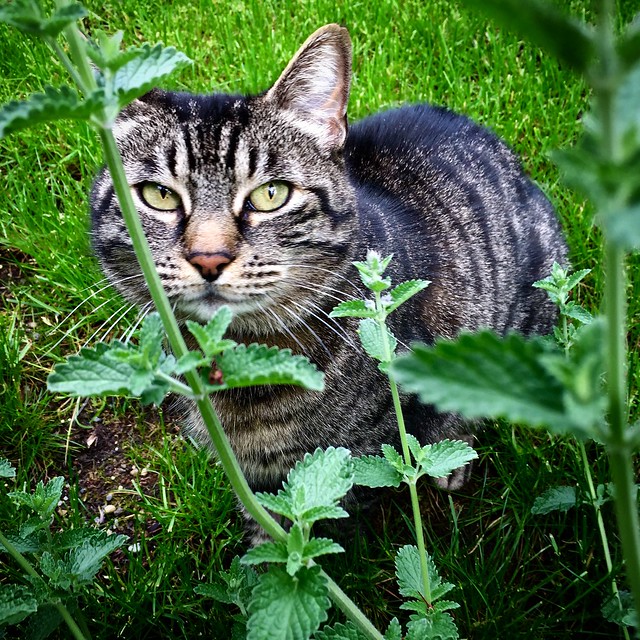
If you would like to sponsor a cat or kitten you can learn more here
Donate

If you would like to donate to the centre you can learn more here
Volunteer

If you would like to volunteer at the cat centre or shop you can learn more here

